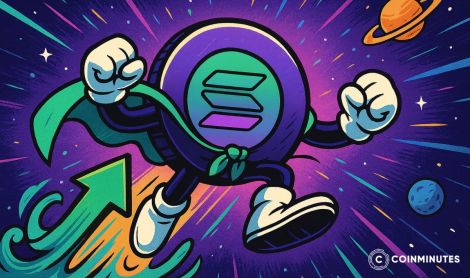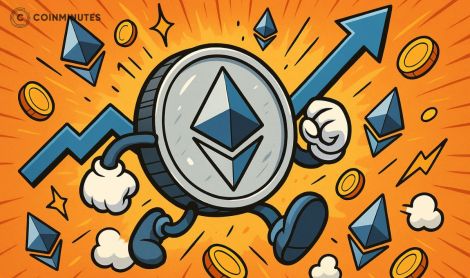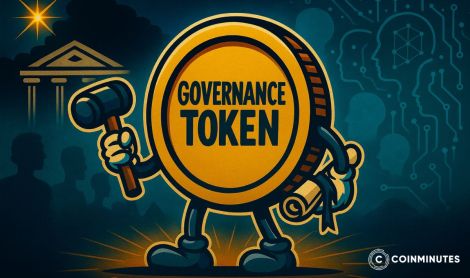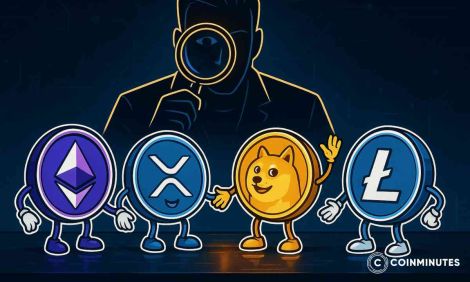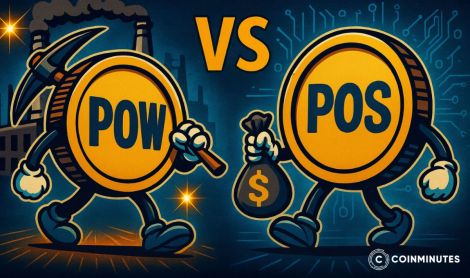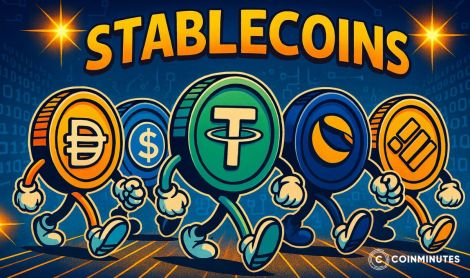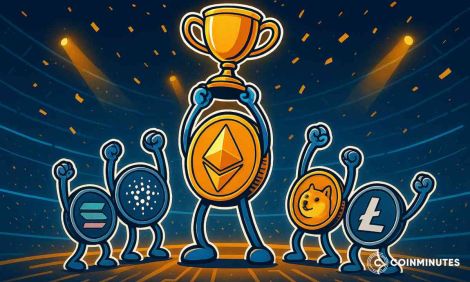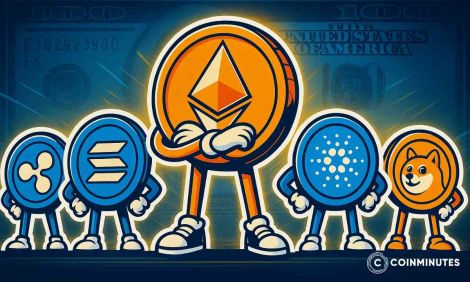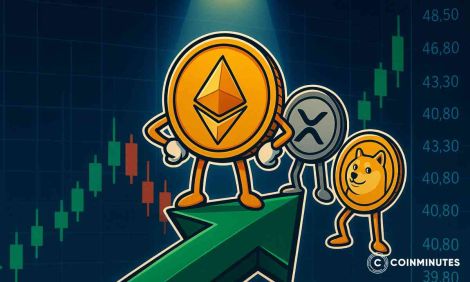Understanding Altcoin Dominance: A Complete Guide to Read the Altcoin Dominance Chart
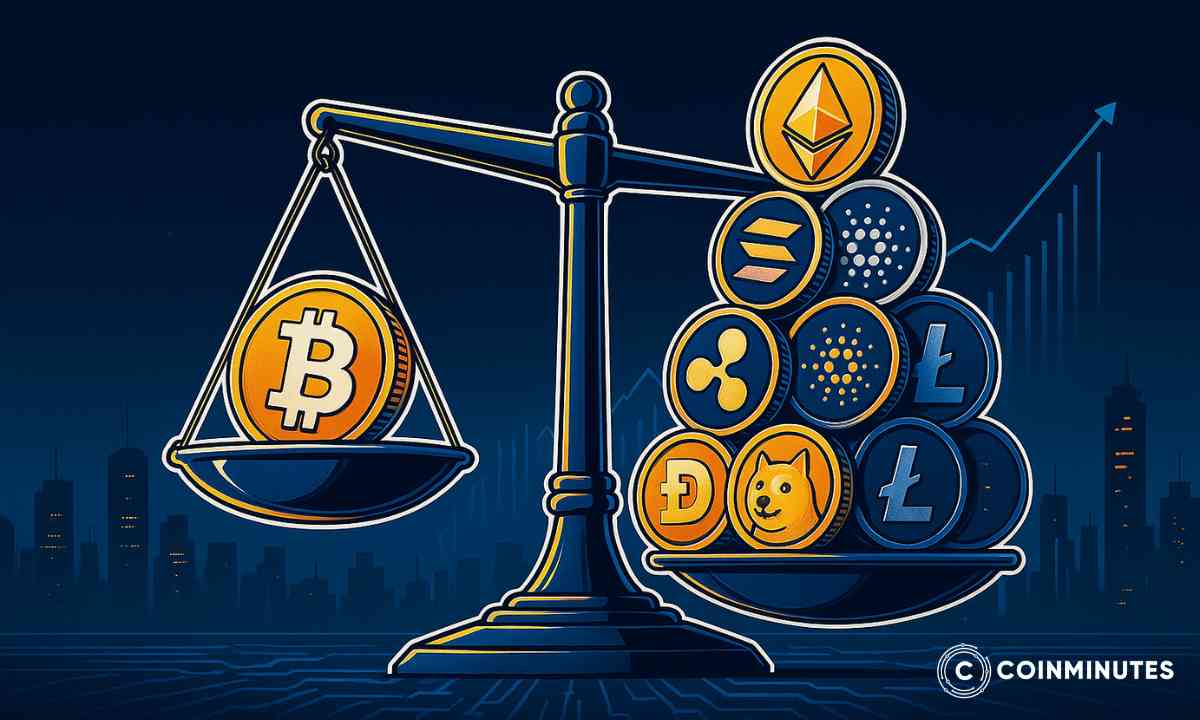
You've probably heard people in the crypto world throwing around terms like "dominance" and "altseason." It sounds like complicated trader-speak, but it's actually a super simple and powerful idea that can help you make sense of the market's wild mood swings.
Think of it like a weather forecast for the entire crypto market. It helps you know when it's sunny and clear for altcoins, and when you should probably grab an umbrella because a storm might be brewing.
Understanding this one concept can give you a huge advantage in figuring out where the money is flowing and why some coins are pumping while others are not. So, let's break it down in a way that actually makes sense. Welcome to CoinMinutes.
What is Altcoin Dominance?
Suppose the total amount of money invested in the crypto market is one massive pizza.
The measure of this entire pizza is the "total crypto market cap."
Bitcoin dominance merely indicates the size of the Bitcoin slice of the pie. For quite some time, it was almost the whole pizza.
Altcoin dominance is... the rest of the pizza. It's the sum of the sizes of the thousands of slices—Ethereum, Solana, Cardano, and even the strange ones like Dogecoin. Each of them, blended together.
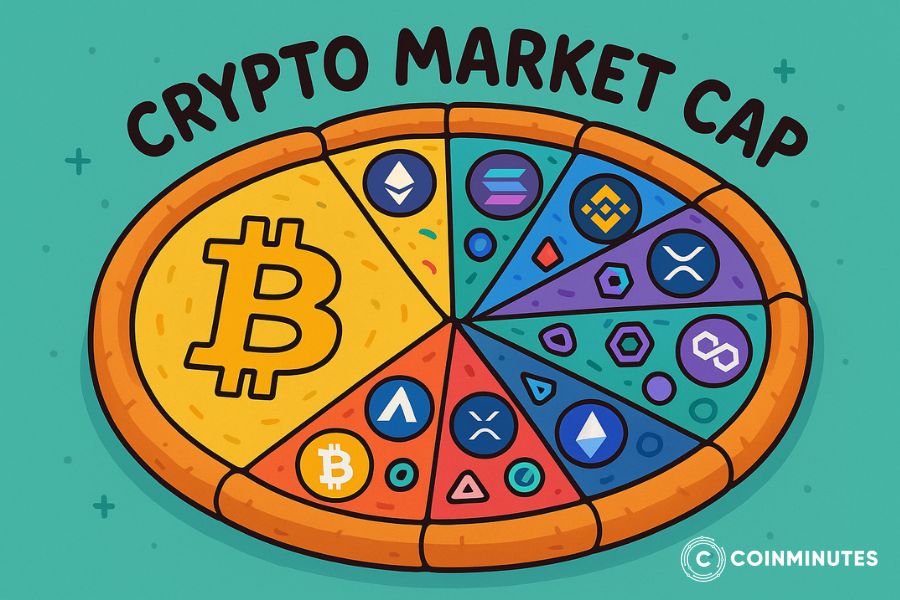
As the altcoin slice of the pizza keeps growing, it points out the new angle. It shows that investors have turned cautious. They are feeling positive, and instead of the big, safe that is Bitcoin, they are dragging their money into the smaller, riskier but potentially more rewarding altcoin slices.
This stage of increasing altcoin dominance is what everyone refers to as an "altseason."
When the altcoin slice of the pizza gets smaller, it is a sign that things are contrary to the aforementioned one. The people who are frightened and want their money back from altcoins and go back to Bitcoin for their safety are the ones who make the altcoin slice shrink.
Therefore, this single number is just a market mood check of risk appetite.
How to Read the Altcoin Dominance Chart?
Okay, here's a little secret: you won't usually find a chart on a trading platform that's actually called "Altcoin Dominance." It's not a standard ticker.
The cheat code that everyone uses is to look at the Bitcoin Dominance chart, which has the ticker BTC.D, and just think of it in reverse.
Since the whole market is 100%, the math is easy. If the BTC.D chart is at 45%, that means altcoin dominance is at 55% (100% - 45%). So, a falling BTC.D chart means a rising altcoin dominance chart. Easy peasy.
When you're looking at the chart, here are the main things to watch for:
The Trend: Is the line generally going up or down? An upward trend in altcoin dominance (meaning BTC.D is falling) is a great sign for the altcoin market. A downward trend is a bad sign. It's that simple.
Floors and Ceilings (Support and Resistance): You'll notice on the chart that the price seems to bounce off certain levels. A "floor" (or support) is a level where it has historically stopped falling. A "ceiling" (or resistance) is a level where it has historically stopped rising.
-
If altcoin dominance breaks through a ceiling it has struggled with before, that's a very bullish sign. It's like a breakout that could signal a big rally is starting.
-
If it breaks below a floor that has held it up in the past, that's a very bearish sign. It's a warning that money is leaving the altcoin market in a hurry.
I remember in early 2021, traders were watching the BTC.D chart like hawks. It kept bouncing off a key support level for weeks. When it finally broke down through that floor, it was like a starting gun went off for one of the biggest altseasons we've ever seen.
Top Altcoins Leading the Dominance Charge
That "altcoin slice" of the pizza isn't uniform. A few heavyweights are so big that their performance can make the whole slice grow or shrink all by themselves.

Ethereum (ETH)
Ethereum is absolutely the king of the altcoins. It is the toughest silverback gorilla of the forest. In the same way, calling it a coin is like calling the internet a calculator. ETH is a giant, worldwide computing platform where most of the innovative crypto work are done. The whole Decentralized Finance (DeFi) and NFT hype? That's the Ethereum baby.
Ethereums pull is huge. During the "DeFi Summer" of 2020, a host of crypto "banking" apps just like that, built on Ethereum, suddenly became popular. A lot of money, in the billions, poured into ETH and its ecosystem, and you could actually watch the altcoin dominance graph going up rapidly due to it. What happens when money goes into Ethereum? The whole altcoin market gets a lift.
Solana (SOL)
Solana is known for being super fast. It entered the market as one of the most important rivals for Ethereum, with the promise of being incredibly fast and very cheap to use. To put it another way, it is like a sports car with a shiny look versus Ethereum's trusty but sometimes traffic jammed family car.
As 2021 was going by, the "ETH killer" tale was still having a big impact, drawing more and more money into it. Solana's app and NFT marketplace ecosystem went viral, and its market cap went from exponential to parabolic. It was a clear demonstration of how one single, potent narrative around new technology could persuade people to reallocate their funds, thus directly increasing the altcoin total dominance.
Binance Coin (BNB)
BNB is the house token of the largest crypto casino in the world, the Binance exchange. Initially, BNB was just a token that could give you a discount on trading fees, but now it is the token that powers the BNB Smart Chain, its own blockchain.
As Binance is the place where millions of new people buy crypto for the first time, it is a major hub for the injection of money into the market. It became a popular, low-cost alternative to Ethereum for crypto gaming, thus its blockchain is gaining more and more users. The success of BNB is directly linked to that of Binance, which is a big player in the altcoin dominance equation.
XRP (Ripple)
XRP is one of the old guard. It's been around forever. Its goal is very corporate and specific: to help banks and big financial companies send money across the world faster and cheaper.
XRP's story is all about the promise of being used by the "grown-ups" in traditional finance. But its biggest impact on the charts has come from its long, dramatic legal battle with the U.S. government (the SEC). Every piece of news, good or bad, about that lawsuit sends its price flying or crashing, which is big enough to make a dent in the overall altcoin dominance metric.
Cardano (ADA)
If Solana is the fast sports car, Cardano is the ultra-safe, meticulously engineered Volvo. Its development is famously slow because its creators are very academic. They peer-review everything, taking a "measure twice, cut once" approach.
Cardano's strength comes from its massive, loyal community that truly believes in this slow-and-steady method. When Cardano releases a major upgrade, that community rallies hard, driving its price up. This shows how a project's philosophy and the strength of its followers can be enough to make it a major player in the dominance charts.
Polygon (MATIC)
Polygon isn't trying to kill Ethereum; it's trying to be its best friend. It's a "Layer 2" solution, which is a fancy way of saying it's like an express toll lane built alongside the main Ethereum highway. It helps Ethereum handle more traffic, making it faster and cheaper for everyone.
Polygon blew up for one simple reason: Ethereum got too expensive to use for normal people. Polygon offered a cheap and easy alternative, and tons of apps and users flocked to it. Its success proves that you don't have to be a competitor to become huge; sometimes, being a helper to the king is a very profitable business model.
Avalanche (AVAX)
Avalanche is another major contender for the smart contract throne. It's also super fast and has a cool feature called "subnets," which lets projects launch their own custom blockchains that are all connected.
Avalanche got a lot of attention by throwing money at the problem. It launched huge incentive programs to pay DeFi projects and users to come over to its platform. It worked. This attracted a ton of cash and developers, carving out a significant piece of the market share and making it another key driver of altcoin dominance.
Altcoin Dominance vs. Bitcoin Dominance
You can't really get the picture by looking at altcoin dominance alone. You have to look at its arch-nemesis: Bitcoin dominance. They are two ends of a see-saw.
Understanding Bitcoin Dominance
Bitcoin dominance (BTC.D) is just that Bitcoin slice of the pizza we talked about. For years, it was basically the whole pizza. As the altcoin world grew, that slice got smaller.
Think of BTC.D as the market's fear gauge.
When BTC.D is high (say, over 50%), it means people are scared. They're huddled in the perceived safety of Bitcoin. This usually happens in a bear market when people just want to preserve their money.
When BTC.D is low (say, under 45%), it means people are feeling greedy. They're confident, taking risks, and throwing money at altcoins hoping for bigger returns.
The Interplay Between Altcoin and Bitcoin Dominance
The see-saw effect between these two metrics is what creates the crypto market's famous cycles. I've seen this pattern play out a few times, and while it's not a perfect science, it often goes something like this:
- The Money Arrives: Big money, new investors, they all tend to buy Bitcoin first. It's the easiest to understand. So, Bitcoin's price pumps hard, and BTC.D goes up.
- The Profits Trickle Down: After Bitcoin has had a huge run, people start to take profits. But instead of cashing out, they look for the next big thing. They move their money into the big, established altcoins, especially Ethereum. Now, BTC.D starts to go down.
- Full-Blown Altseason: Once Ethereum and the other big alts have pumped, the real frenzy begins. People take those profits and start gambling on smaller, more obscure altcoins. This is when you see coins you've never heard of do a 50x in a month. It's a period of pure euphoria. BTC.D falls off a cliff, and altcoin dominance goes to the moon.
- The Hangover: Eventually, the party ends. A bad piece of news hits, and the whole thing comes crashing down. People panic-sell their alts and run back to the safety of Bitcoin (or just cash out completely). BTC.D stabilizes and starts to climb back up.
Rinse and repeat every few years.
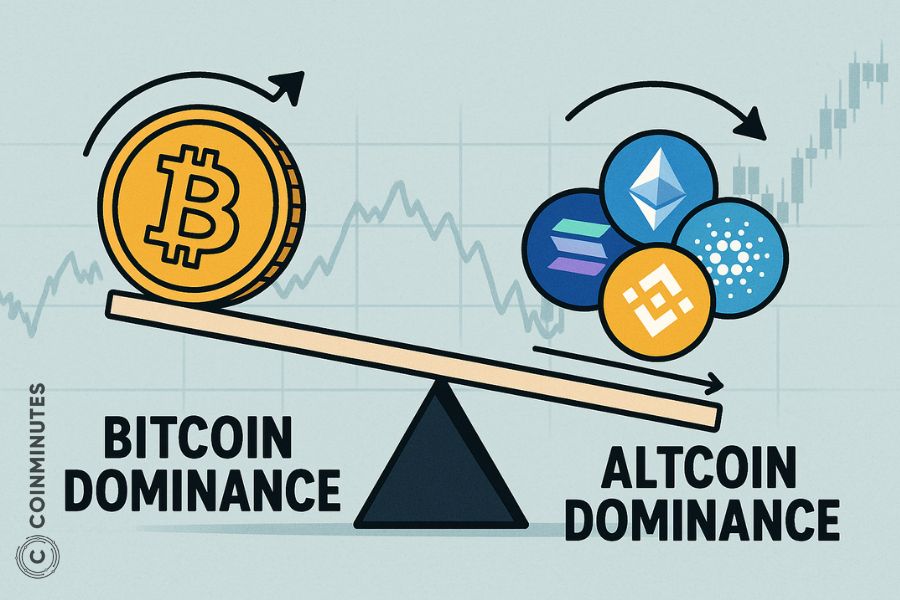
How Traders and Investors Use Altcoin Dominance
Okay, this isn't just a fun theory. People use this data to try and make smarter trading decisions. They look at the Bitcoin Dominance chart as a weather forecast for the entire altcoin market.
Using Dominance Charts to Predict Market Trends
Traders on sites like TradingView will draw lines on the BTC.D chart, marking "floors" (support) and "ceilings" (resistance).
If the chart breaks through a floor, it's like a starting gun for altseason. It's a strong sign that money is leaving Bitcoin, and they might start buying up altcoins.
If the chart breaks through a ceiling, it's a warning sign. It's like seeing storm clouds gathering. It means people are getting scared and running back to Bitcoin, and it might be a good time to sell some altcoins.
Popular Trading Strategies Based on Dominance
- The Rotation Play: This is the classic strategy. A trader sees Bitcoin's price stalling and the BTC.D chart looking weak. They'll sell some Bitcoin and buy a handful of promising altcoins, hoping to catch the next wave of money rotating through the market.
- The Defensive Move: If the economy looks shaky or the BTC.D chart starts trending up, a smart trader might "de-risk." They'll sell their small, super-risky altcoins and move that money into something safer like Bitcoin or Ethereum, or even a stablecoin, to protect their capital.
- The Confirmation Check: To be extra sure an altseason is real, a trader won't just look at BTC.D. They might also look at the ETH/BTC chart. If that chart is going up, it means Ethereum is getting stronger against Bitcoin, a classic sign the party is starting.
Factors Influencing Altcoin Dominance
So what actually makes this big see-saw move? It's usually a combination of a few key things.
Technological Innovation and New Narratives
Nothing moves the crypto market like a good story. And new technology creates the best stories.
- Remember the NFT craze in 2021? The story of digital art and collectibles was so powerful it pumped billions of dollars into Ethereum and Solana, which were the main hubs for NFTs. This caused a huge surge in altcoin dominance.
- Before that, it was the DeFi story in 2020. The idea of "crypto banking" was the hot new thing, and it drove a similar flood of cash into the space. A new, exciting narrative can completely reshape the market.
Regulatory Environment and Market Sentiment
Crypto doesn't exist in a vacuum. The grown-ups in government are always watching, and their decisions can cause panic or euphoria.
- Good News: When there's talk about the government approving something like a spot Ethereum ETF, the market sees it as a sign of legitimacy. This can boost confidence and send money flowing into altcoins.
- Bad News: On the other hand, when the SEC sued Ripple over XRP, it created years of fear and uncertainty. That kind of action can cause investors to dump their altcoins and hide in Bitcoin, crushing altcoin dominance.
Macro Trends and Market Cycles
What's happening in the "real world" economy has a huge impact on the crypto market.
- Good Times: When the stock market is booming and interest rates are low, people feel rich and are more willing to gamble on risky things like altcoins. This is a great environment for an altseason.
- Bad Times: When there's a recession, high inflation, or general economic fear, people pull back. They sell their riskiest assets first. In crypto, that means altcoins get sold off hard.
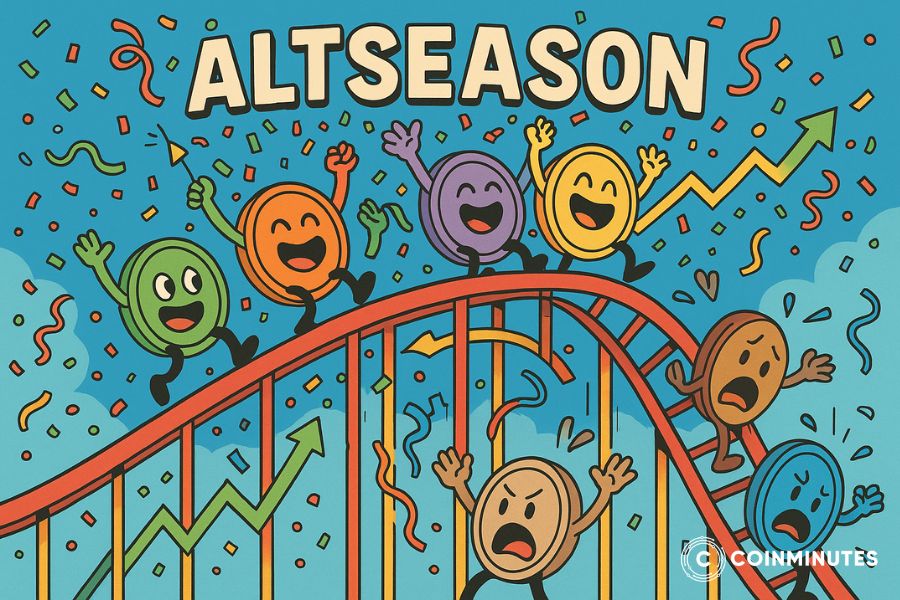
Risks and Opportunities in High Altcoin Dominance Markets
This brings us to the most important part. I have a friend who made life-changing money during the 2021 altseason. I have another friend who lost his entire savings. Both scenarios are very real.
An altseason, when altcoin dominance is high, is the crypto equivalent of a massive party. The music is loud, everyone's having fun, and some people are making insane amounts of money.

Potential Rewards for Investors
This is the dream. During a true altseason, it feels like everything is going up. Small, undiscovered projects can do a 10x or even 100x in a matter of weeks. It's a period of maximum opportunity where fortunes can be made very quickly if you're lucky and smart.
Key Risks and Challenges
But that party is also the point of maximum danger. When altcoin dominance is peaking, it's a sign that the market is full of greed and euphoria.
- The Inevitable Crash: These euphoric periods never last. They are always followed by a brutal crash. Most of the altcoins that skyrocket will crash by 90-95% and many will never recover. The history of crypto is littered with the ghosts of "top altcoins" from past cycles.
- The Scammers Come Out: Altseasons are a paradise for scammers. They create useless coins, hype them up on social media, and then disappear with everyone's money in a "rug pull." The U.S. Federal Trade Commission (FTC) reported that consumers lost over $1 billion to crypto scams in 2021 alone, much of it during the height of the altseason frenzy. This isn't just a possibility; it's a documented bloodbath for unsuspecting investors.
How to Navigate High Altcoin Dominance Environments
- Have an Exit Plan: The single biggest mistake people make is not taking profits. Decide beforehand at what price you'll sell a portion of your holdings. Don't let greed blind you.
- Stick to Quality (Mostly): It's fun to gamble on a few meme coins, but the core of your altcoin portfolio should be in projects that actually do something useful and have a real team behind them.
- Use Dominance as Your Thermometer: When altcoin dominance is getting really high, see it for what it is: a warning sign. It means the party might be ending soon. That's the time to be more cautious, not the time to go all-in.
Continue Your Crypto Journey with CoinMinutes
The world of cryptocurrency is always moving, and understanding concepts like altcoin dominance is just one piece of the puzzle. The cycles of capital flowing between Bitcoin and altcoins are a fundamental part of this market, but they're always evolving.
At CoinMinutes, we're committed to breaking down these complex topics into simple, actionable insights to help you on your journey. The market is exciting, but education is the key to navigating it safely and confidently. We encourage you to keep learning and stay curious. CoinMinutes is here to help you every step of the way.
 English
English
 Vietnamese
Vietnamese






